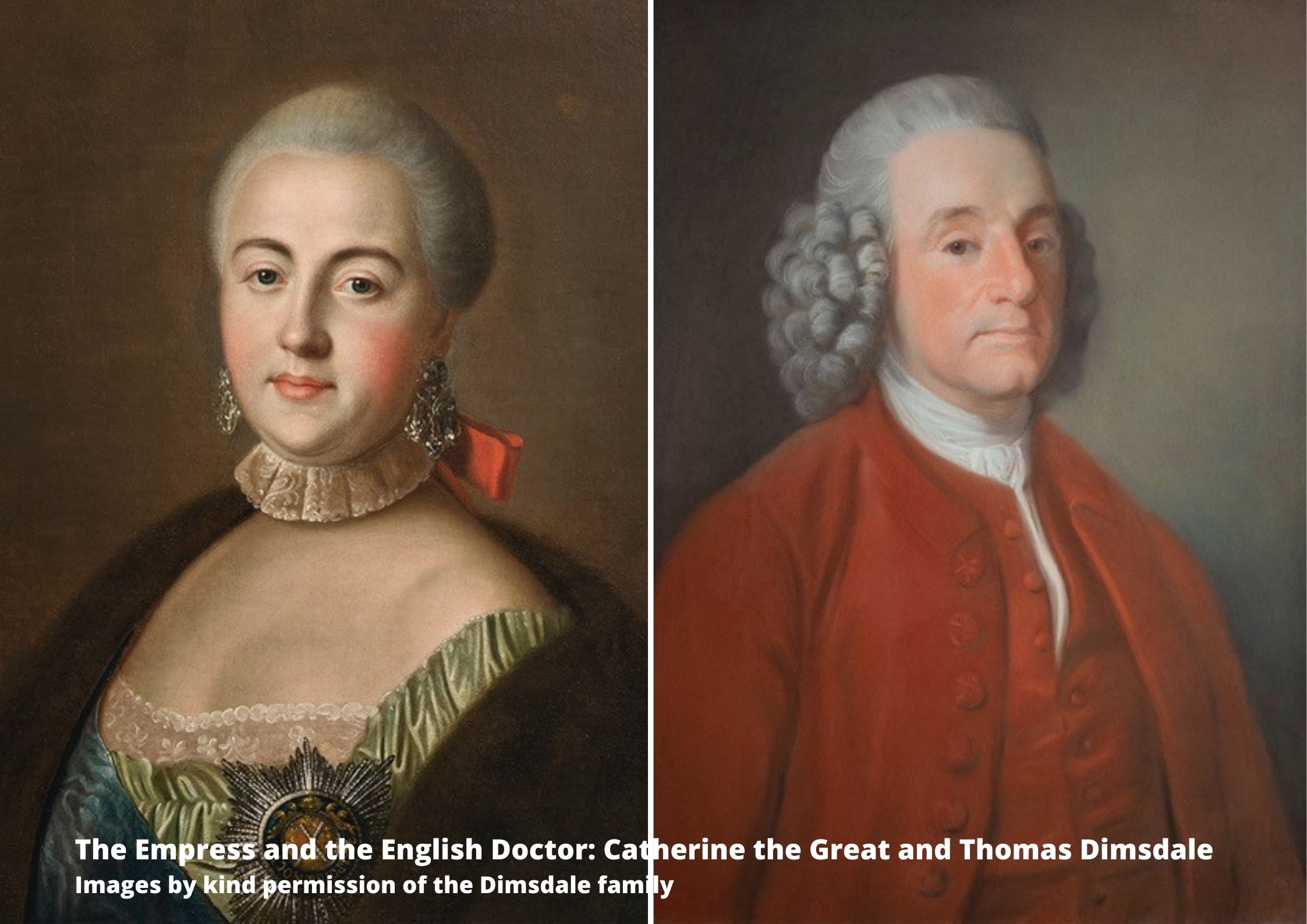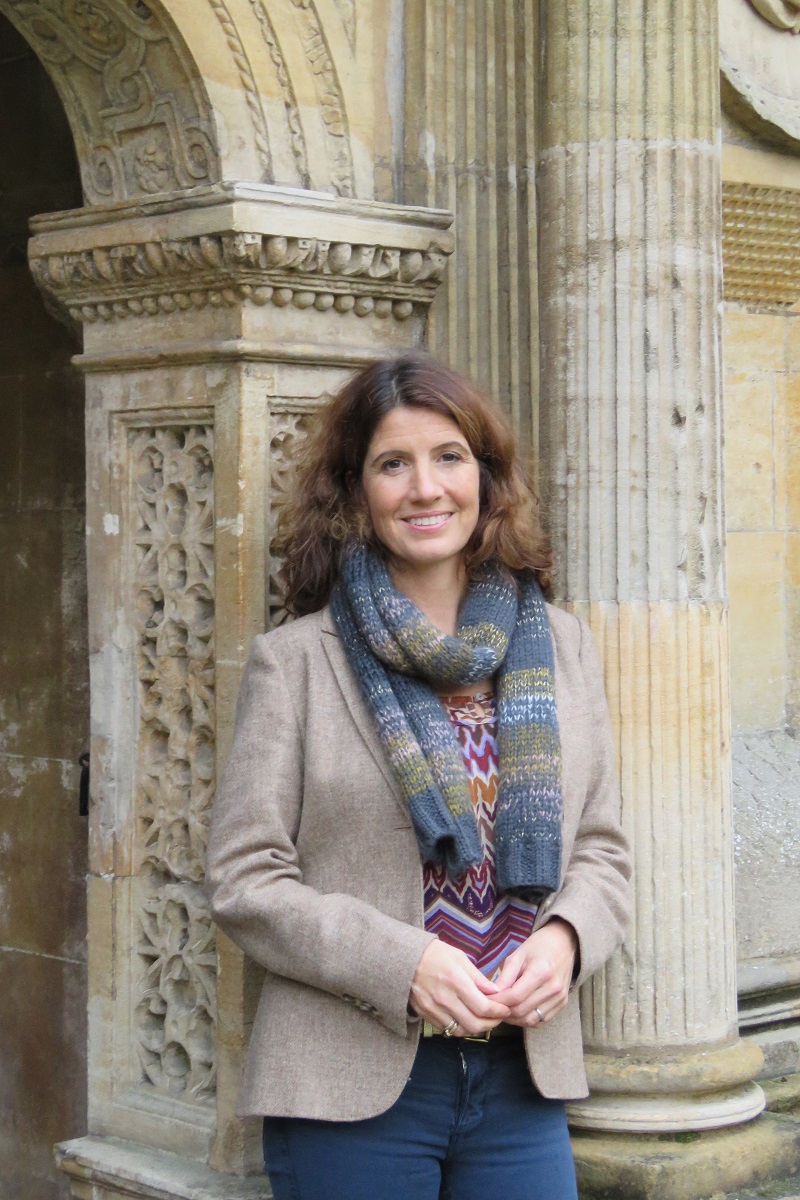The Empress and The English Doctor – a new book
- 07 April 2022
- 3 minutes
A new book detailing a public health crisis, questions surrounding vaccination and inoculation, and a celebrity influencer with enormous powers of persuasion has been published.
Lucy Ward, the Head of Communications at Gonville & Caius College from 2015 to 2018 and a former newspaper journalist for The Guardian, has written The Empress and The English Doctor: How Catherine the Great defied a deadly virus.
Lucy began the book prior to the Covid-19 pandemic, but there are some similarities in a compelling story which details a public health campaign to reduce the effect of smallpox, led by an enlightened and inspirational female leader. As smallpox ravaged her empire and threatened her court, Catherine the Great took the momentous decision to summon the Quaker physician Thomas Dimsdale to St Petersburg to carry out a secret mission that would transform both their lives.
To protect her son and heir Paul, she decided to have him inoculated, and to undergo the procedure herself first in order to prove it was safe. Inoculation meant giving a healthy individual a minute dose of live smallpox virus itself in order to induce a mild version of the disease and confer lifelong immunity: essentially fighting fire with fire.
Dimsdale, persuaded by the Russian ambassador to London, made the journey to Russia in summer 1768, though the planned inoculation of the Empress herself remained secret.
King George III, a committed advocate of inoculation, knew about the trip, and was deeply anxious at the political implications – Russia was an ally and the death of an empress at the hand of a British subject would have been disastrous. Dimsdale arrived to find Catherine extremely well-informed about inoculation and entirely convinced by the ‘data’.
Lucy says: “To me, the story has two key themes. One is that Catherine the Great is known for sexual smears that are untrue and not recognised for her extraordinary insight and vision around inoculation.
“She was a truly remarkable woman: an influencer, and a political leader who recognised the power of example, and indeed the power of her female body to persuade. The most interesting thing she did with her body, in my view, was to be inoculated.
“The second is that there is so much of interest in the history of inoculation before Jenner (Edward Jenner, who proved that the milder and safer cowpox virus could also protect against smallpox – the process he called vaccination) that is barely known.
“I read often that inoculation had a 1-2% mortality rate: by the latter part of the eighteenth century that is very wide of the mark. Dimsdale, a cautious man, described inoculation in a later treatise as ‘infallible’ if conducted correctly.
“Of course, the risk of infection meant it would always be inferior to vaccination, but it was the foundational technology that allowed Jenner to make his crucial leap forward. Indeed, as Jenner said, it was inoculation that revealed the power of cowpox to confer immunity against smallpox (inoculation proved that individuals who had not had natural smallpox were already immune as it triggered no reaction).”

Lucy’s book, which is available in book shops and published by Oneworld, uses Dimsdale’s medical notes to track Catherine’s symptoms, recovery and influence, as her lead was followed.
And there is a Caius link in the story – Lucy says “there is always a Caius link” – as she explains.
“In 1781, Dimsdale travelled a second time to Russia to inoculate Catherine the Great’s grandsons (one of them was Alexander, who would become Czar),” Lucy adds.
“He was accompanied by his third wife, Elizabeth, and in a separate carriage by the Reverend John Glen King, the former English Chaplain in St Petersburg and a Caian.
“He was returning to Russia to sell a collection of antique coins, and didn’t return to Britain with the Dimsdales.”

Lucy by the Gate of Honour at Caius


